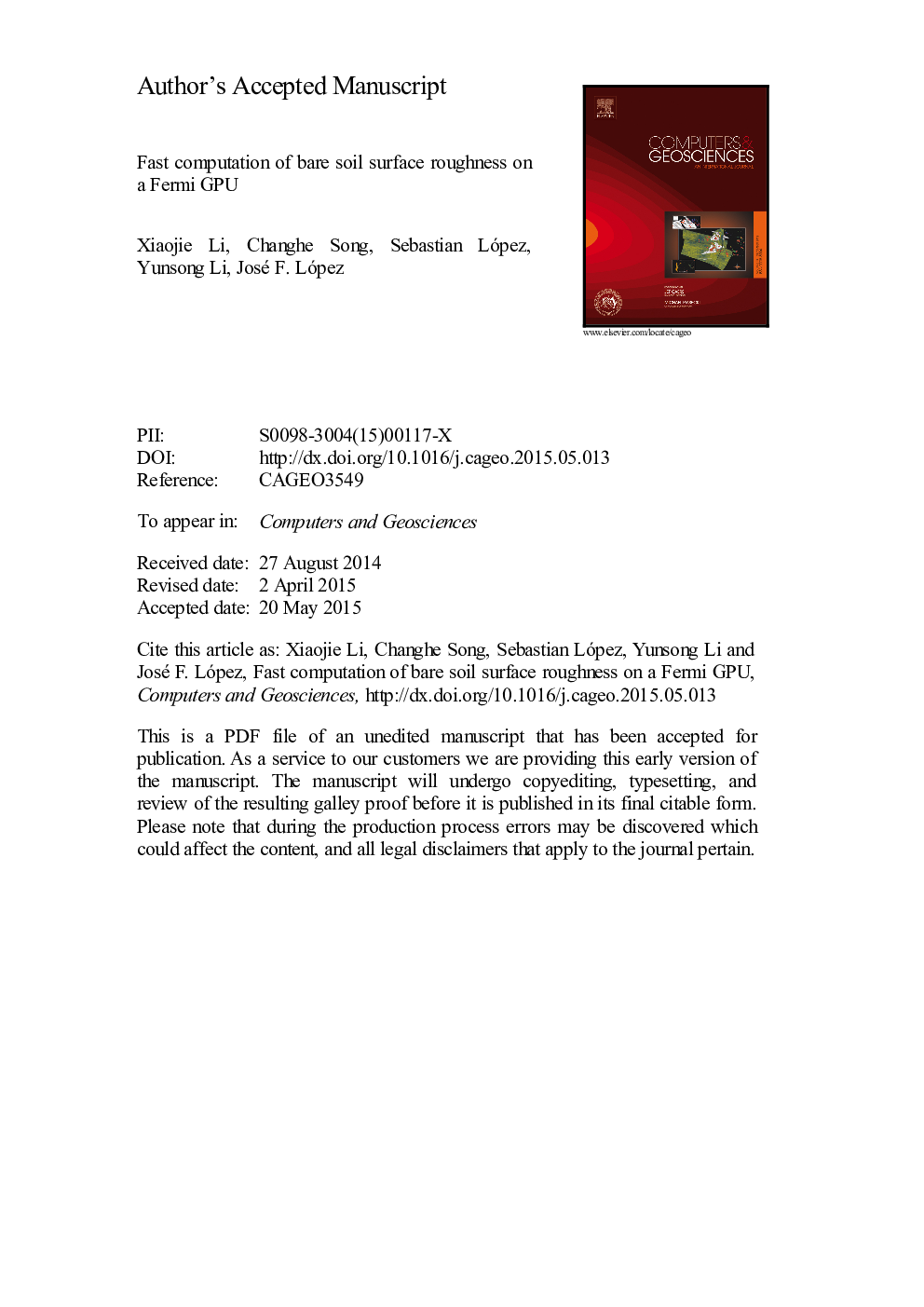| Article ID | Journal | Published Year | Pages | File Type |
|---|---|---|---|---|
| 6922511 | Computers & Geosciences | 2015 | 16 Pages |
Abstract
Surface roughness is an important factor in bare soil microwave radiation for the observation of the Earth. Correlation length and standard deviation of surface height are the two statistical parameters that describe surface roughness. However, when the number of data points is large, the calculation of surface roughness parameters becomes time-consuming. Therefore, it is desired to have a high-performance computing facility to execute this task. A Graphics Processing Unit (GPU) provides hundreds of computing cores along with a high memory bandwidth. To carry out a parallel implementation of the algorithms, Compute Unified Device Architecture (CUDA) provides researchers with an easy way to execute multiple threads in parallel on GPUs. In this paper, we propose a GPU-based parallel computing method for 2D surface roughness estimation. We use an NVIDIA GeForce GTX 590 graphics card to run the CUDA implementation. The experimental input data is collected by our in-house surface roughness tester which is designed based on the laser triangulation principle, giving sample data points of up to 52,040. According to the experimental results, the serial CPU version of the implementation takes 5422Â s whereas our GPU implementation takes only 47Â s, resulting a significant 115Ã speedup.
Related Topics
Physical Sciences and Engineering
Computer Science
Computer Science Applications
Authors
Xiaojie Li, Changhe Song, Sebastian López, Yunsong Li, José F. López,
